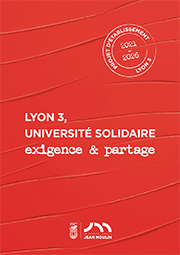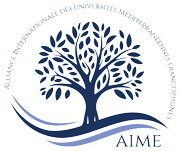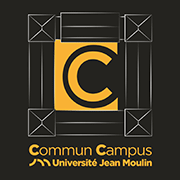AccueilRechercheProgrammes et productions scientifiquesThèsesThèses soutenuesThèses soutenues - 2006-2021Thèses soutenues - 2015
-
Partager cette page
- Recherche,
YASIN Fahimeh
La relation de la création picturale et de la création littéraire dans l’oeuvre de René Char
Publié le 6 juillet 2015 – Mis à jour le 6 juillet 2015
Thèse en Langue et Littérature fran?aises soutenue le 4 juillet 2015.
Il s’agit d’examiner le rapport qui existe dans l’oeuvre de René Char entre sa poésie, les peintres ses Alliés Substantiels, la peinture qu’il a pratiquée. A quelles sources a-t-il puisé ? de quelles influences relève-t-il ? En quoi ont-elles été déterminantes ? Vers quelle(s) mise(s) en pratique le conduit ce parler des images qu’est sa poésie ? Quels sont les liens qu’il construit avec ses amis peintres ? En quoi influent-ils sur sa pratique de poète, sur le regard qu’il porte sur l’oeuvre peinte et sur la manière de concevoir l’espace poétique : ce mouvement du regard qui découvre autour de lui le monde ? Poésie et peinture n’aboutissent-ils pas aux mêmes questionnements dans les rapports respectifs avec la réalité, la vérité, la beauté, le dépassement, la quête d’un horizon, d’un absolu qui s’éloigne sans cesse ? Avancer, toujours avancer dit Char, mais en vue de quoi ?Une première partie : présente les dépendances sensibles de la création chez Char : son pays natal et sa symbolique, sa famille et ses souvenirs de ? l’?ge d’or ?, ses amis surgis de la nuit de la résistance, ses amis peintres, que rien ne réunit, sinon d’être à contre courant des modes, deux philosophes : Héraclite, qui met au coeur du monde ? l’alliance des contraires ?, Heidegger qui confère à la poésie la première place. Une deuxième partie : indique les dépendances scripturales et picturales sous trois aspects. Le premier : Les théories artistiques en écriture et peinture qui ont influencé René Char, Baudelaire et Rimbaud, le surréalisme et sa proximité avec les peintres, la méditation d’Heidegger sur la vérité en art. Le deuxième : La mise en pratique du travail poétique, sa maturation. L’originalité de son travail critique sur les peintres. Le troisième : comment aphorismes et métaphores sont constitutifs de son travail poétique et pourquoi ils nécessitent une gestion de l’espace qui rejoint l’espace pictural. La troisième partie : partant de la double expérience de Char comme poète et peintre, nous montre que poésie et peinture ne peuvent se définir dans l’ordre de la préférence, puis à partir des conditions pour atteindre la vérité en art, comment pour le poète elle peut surgir : se pose la question du rapport de l’imaginaire par rapport à la réalité incréée. Enfin en lien avec le problème de l’aboutissement de l’oeuvre artistique, comment peut-on en peinture et en poésie définir leur ? au-delà ?, leurs horizons respectifs ?
This research thesis examines the relationship in the work of René Char between his poetry, painters “Alliés Substantiels” and paintings which he has done. What sources does he benefit from? Under what influences does he fall? In which senses are they determinative? How does this talk on the image develop his poetry in terms of the practice? What are the relationships he has built with his painter friends? What inspires his poetic practice, the way he looks on the painted work and his conception of the poetic space: Does this movement help him to discover the world around himself? Poetry and painting do not come to the same questions in the respective links with reality, truth, beauty, self-surpassing and the
quest for a horizon and an absolute, both of which walk away incessantly. Forward, always forward Char says, but for what? The first part: this sensitive dependency of creation in Char: his homeland and its symbolism, his family and his memories of the "golden age", his friends emerged from the night of the resistance, his painter friends. Nothing brings together, if not to be against the current fashions, both philosophers Heraclitus, who puts in the heart of the world "alliance of opposites" and Heidegger, who gives poetry the first place. The second part: Written and pictorial practice shows the dependencies in three ways. The first: The artistic theories in writing and painting that influenced René Char, Baudelaire and Rimbaud; the surrealism and its proximity to the painters; and Heidegger's meditation on truth in art. The second: The practical implementation of the poetic work, his maturation. The originality of his critical work on painters. The third: How aphorisms and metaphors are constitutive of his poetic work and why they require the management of the space that joins the pictorial space. The third part: leaving the double experience of Char as a poet and painter shows us that poetry and painting cannot be defined in order of preference, and then from the conditions to reach the truth in art, how the question of the imaginary with reality and definition of uncreated reality arises for the poet. Finally, in connection with the problem of the culmination of the artistic work, how can we in painting and poetry define their "beyond", their horizons?
Mots-clés : René Char La Création La Poésie La Peinture La Littérature Création picturale Création littéraire L’horizon L’art L’age d’or L’au-delà This research thesis examines the relationship in the work of René Char between his poetry, painters “Alliés Substantiels” and paintings which he has done. What sources does he benefit from? Under what influences does he fall? In which senses are they determinative? How does this talk on the image develop his poetry in terms of the practice? What are the relationships he has built with his painter friends? What inspires his poetic practice, the way he looks on the painted work and his conception of the poetic space: Does this movement help him to discover the world around himself? Poetry and painting do not come to the same questions in the respective links with reality, truth, beauty, self-surpassing and the
quest for a horizon and an absolute, both of which walk away incessantly. Forward, always forward Char says, but for what? The first part: this sensitive dependency of creation in Char: his homeland and its symbolism, his family and his memories of the "golden age", his friends emerged from the night of the resistance, his painter friends. Nothing brings together, if not to be against the current fashions, both philosophers Heraclitus, who puts in the heart of the world "alliance of opposites" and Heidegger, who gives poetry the first place. The second part: Written and pictorial practice shows the dependencies in three ways. The first: The artistic theories in writing and painting that influenced René Char, Baudelaire and Rimbaud; the surrealism and its proximity to the painters; and Heidegger's meditation on truth in art. The second: The practical implementation of the poetic work, his maturation. The originality of his critical work on painters. The third: How aphorisms and metaphors are constitutive of his poetic work and why they require the management of the space that joins the pictorial space. The third part: leaving the double experience of Char as a poet and painter shows us that poetry and painting cannot be defined in order of preference, and then from the conditions to reach the truth in art, how the question of the imaginary with reality and definition of uncreated reality arises for the poet. Finally, in connection with the problem of the culmination of the artistic work, how can we in painting and poetry define their "beyond", their horizons?
Keywords : René Char, Creation , Poetry, Painting, Literature, Pictorial creation
Literary creation, Horizon, Art, Golden age, Beyond
Directeur de thèse : Guy LAVOREL
Membres du jury :
Hélène CAMPAGNOLLE-CATEL, Ma?tre de conférences, Université Sorbonne Nouvelle
Sylviane COYAULT, Professeur des universités, Université Blaise Pascal
Guy LAVOREL, Professeur des universités, émérite, Université Jean Moulin Lyon 3
Jean Pol MADOU, Professeur des universités, Université de Savoie
Président du jury : Jean Pol MADOU
Mention : Très honorable
Equipe d'accueil : FRANCOPHONIE
Documentation
Mise à jour : 6 juillet 2015







